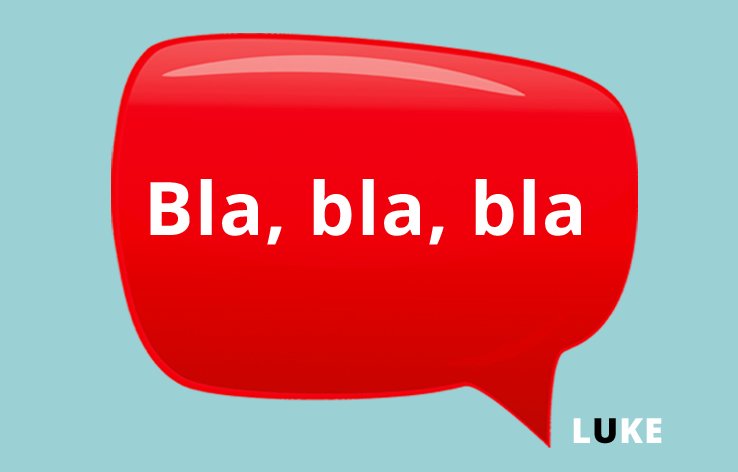There. I’ve said it and I am not taking it back…
I used to be brand director for the world’s biggest branding agency and I helped clients all over the world define and craft their missions statements but, more often than not, they were meaningless.
They should be have been called – bla, bla, bla
Why?
Because most of the time clients insisted on marketing speak: they insisted on writing something that was the same as their competitors, something they thought their customers would want to hear and something that was safe, vague and average.
Average is safe. Average takes no risks, it makes no waves and climbs no mountains, it goes along with the crowd but average is invisible.
Believing in it themselves was not important. Result? A set of words that were cold, clinical and shallow .
A good example would be the one of Microsoft’s statements. In an attempt to outline future goals the 1,500 word piece, which is full of insincere over-used marketing speak like “experience footprint” and “connective tissue” is unlikely to get anyone’s mojo working.
In an article by Richard Branson on ‘crafting your mission statement’ he points to pharmaceutical giant Bristol-Myers as an example of companies that don’t know how to differentiate themselves. B-M’s mission statement reads, “To discover, develop and deliver innovative medicines that help patients prevail over serious diseases.” As Branson says; ‘you can’t argue with that, but surely this can be said of every drug company on the planet. Why would a person choose to buy Bristol-Myers’ products or invest in its stock, rather than its competitors?’
I want you to write a manifesto not a mission statement.
A manifesto has passion, belief, power, intention and manifestos are the ultimate challenge. They make you take a hard look at what you stand for and what your brand will stand for.
A manifesto has real meaning, real power and people can get behind it – you, your staff, your suppliers, your customers and the whole world.
Why?
Because a manifesto is a living breath and changing statement – something to live by, not a box ticking exercise.
People rally around a manifesto because it is something they can relate to and believe in. It is real, it is attainable, it strikes a chord. I can guarantee if you compare the mission statement of any 10 FTSE companies they will all say much the same thing.
A manifesto guides and inspires action in others.
In 1935 Walt Disney crafted an 8 page manifesto before he even released his first animated movie.
Beautiful product design, a well crafted website, fantastic literature, a great name, a memorable brand logo are all important – I know and have been producing these things for clients most of my working life but, what underpins all of it is what you are actually trying to say to others.
A manifesto should be a simple and compelling statement of what you stand for and, equally important, what you don’t.
How?
Keep it simple, no marketing jargon or big cleaver words. Don’t over complicate it, write it from the heart and make it memorable. Above all, keep it real.
Buzz Lightyear’s motto from the ‘Toy Story’ movie – and if you have children you will know it off by heart – is, “To infinity and beyond”. I even had to stand on the end of our sofa to say that one again.
Richard Branson suggested Virgin’s should be ‘Screw it, let’s do it!’
Here are a couple of good ones:
- Ben & Jerry’s: ‘Making the best possible ice cream, in the nicest possible way.’
- Walt Disney: ‘To make people happy.’
So! What is your mission statement?


5 Comments. Leave new
Such an awesome read and so true… cheers Arthur!
Thanks Lloyd. Glad you enjoyed it.
True and very naked. I enjoyed reading your article, Arthur. Thanks for sharing it.
Thanks Phumi. I am pleased you found it the post useful
HI Luke.. great read ..thanks for sharing. Sometimes less is more. have a great evening.
Dana